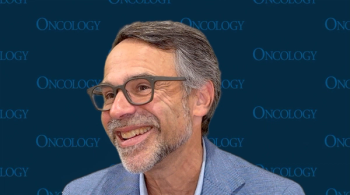
1-Year Trastuzumab Regimen Yields DFS in ERBB2+ Breast Cancer
DFS was improved with 1-year trastuzumab in patients with ERBB2-positive breast cancer enrolled in the SOLD trial.
Patients with ERBB2-positive breast cancer who were being treated with chemotherapy and who received 1 year of adjuvant trastuzumab (Herceptin) experienced improved disease-free survival (DFS) compared with patients who received 9 weeks of treatment, according to findings from a post hoc secondary analysis of the phase 3 SOLD trial (NCT00593697) published in JAMA Network Open.1
The 5-year DFS rate was 90.7% in patients in the 1-year group, and 87.7% in the 9-week group. At 10 years, the DFS was 80.3% in the 1-year group and 78.6% in the 9-week group. For patients in the 9-week group, the overall survival (OS) at 5 and 10 years was 95.0% and 89.1%, respectively. In the 1-year group, OS was 95.9% at 5 years and 88.2% at 10 years.
Findings from a multivariable analysis suggest the risk of death was independently associated with the number of positive axillary nodes (HR, 2.77; 95% CI, 1.79-4.30; P <.001), age at study entry (HR, 1.03; 95% CI, 1.01-1.05; P <.001), and disease stage (HR, 1.93; 95% CI, 1.22-3.03; P = .005). However, the risk of death wasn’t associated with estrogen receptor (ER) status, treatment group, or docetaxel starting dose (HR, 1.22; 95% CI, 0.90-1.64; P = .20).
“These observations mostly agree with those reported from the phase 3 ShortHER trial [NCT00629278], which is, to our knowledge, the only other randomized clinical trial that compared the 9-week and 1-year durations in a comparable patient population,”2 Heikki Joensuu, MD, Research Professor of Academy of Finland and director of the Laboratory of Molecular Oncology Biomedium at the University of Helsinki, and colleagues wrote in the article. “In the ShortHER trial, noninferiority of the 9-week regimen could not be claimed, but there was numerically little difference in DFS or OS between the groups. Unlike the ShortHER trial, we did not find an interaction between the treatment group and the axillary nodal metastasis category.”
This secondary analysis of the SOLD trial included patients 18 years of age and older with histologically confirmed localized ERBB2-positive breast cancer and a World Health Organization performance status of 0 or 1. Patients with a history of distant metastases or neoadjuvant therapy were not included. In the study, patients were randomly assigned 1:1 by study site, ER status, axillary nodal status, and ERBB2 assay.
Patients received 3 cycles of intravenous docetaxel at 80 mg/m2 or 100 mg/m2 with concomitant intravenous or subcutaneous trastuzumab, followed by 3 cycles of intravenous fluorouracil at 600 mg/m2, epirubicin at 75 mg/m2, and cyclophosphamide at 600 mg/m2. The 6 treatment cycles were given every 3 weeks. Concomitant trastuzumab was administered intravenously weekly at 4 mg/kg at the first dose and 2 mg/kg for all subsequent doses or at 3-week intervals at 8 mg/kg at the first dose and 6 mg/kg for all subsequent doses. Patients could also receive subcutaneous trastuzumab at 3-week intervals given at 600 mg regardless of body weight.
Patients in the 1-year group received intravenous or subcutaneous trastuzumab 14 times at 3-week intervals following cessation of chemotherapy. For the 9-week group, trastuzumab wasn’t administered following chemotherapy.
A total of 2176 patients were enrolled with a median age of 56 years old. Of note, 2 patients were excluded due to distant metastases at the date of randomization. The median follow-up time was 8.1 years. The primary end point was disease-free survival; secondary end points included distant DFS and overall survival.
During the follow-up period, 176 deaths and 357 DFS events occurred, which are substantial increases from the first analysis of the SOLD trial. Four patients (0.2%) died of a cardiac cause, three of which had received trastuzumab for 9 weeks.
“The follow-up time. . . may have been too short for capturing all recurrences and breast cancer–related deaths despite ERBB2-positive breast cancers tending to recur earlier than ER-positive, ERBB2-negative breast cancers and usually within the first 8 years since their detection,” noted Joensuu and colleagues. “Potential advantages of the 9-week regimen include little need for cardiac monitoring, fewer visits required for treatment administration, and lower cost. Access to trastuzumab is still a major barrier to care, particularly in low-income and lower-middle-income countries.”
References
- Joensuu H; Fraser J; Wildiers H, et al. Long-term outcomes of adjuvant trastuzumab for 9 weeks or 1 Year for ERBB2-positive breast cancer: a secondary analysis of the SOLD randomized clinical trial. JAMA Netw Open. Published online August 26, 2024. doi:10.1001/jamanetworkopen.2024.29772
- Franco Conte P, Bisagni G, Piacentini F, et al. Nine-weeks versus one-year trastuzumab for early-stage HER2+ breast cancer: 10-year update of the Short-HER phase III randomized trial. J Clin Oncol. 2023. 41(32):4976-4981. doi.org/10.1200/JCO.2023.41.17_suppl.LBA637
Newsletter
Stay up to date on recent advances in the multidisciplinary approach to cancer.

















































































